Best Gait Training Exercises to do with the Solo-Step
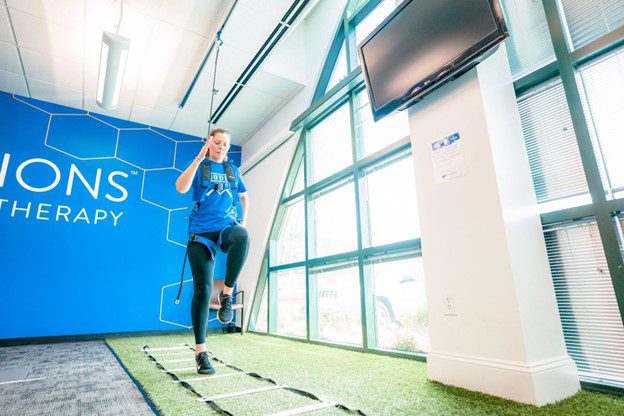
Your patients may require physical therapy or gait training for a variety of reasons. For example, they may need to regain mobility, improve balance, or smooth their gait while walking. If your patient has been injured or has an illness that affected their ability to walk, these exercises may benefit them! These exercises are designed to strengthen muscles, improve posture, and develop muscle memory, allowing your patients to regain mobility and improve their gait.
Use Assistive Devices (If Necessary)
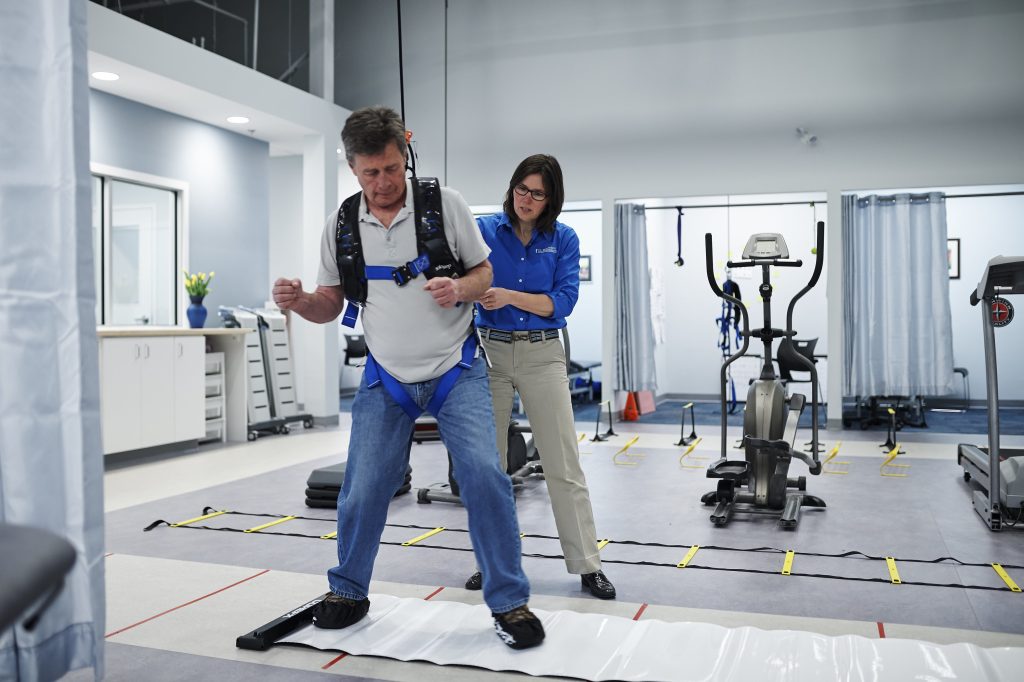
If your patient fears falling or lacks confidence while performing physical therapy tasks, an assistive device like the Solo-Step safety overhead system may benefit them. Some benefits patients may experience include:
- Decreased fear of falling
- Increased confidence during treatment
- Ability to challenge themselves with advanced therapies
- 100% safety from any fall-related injuries
Range of Motion Exercises
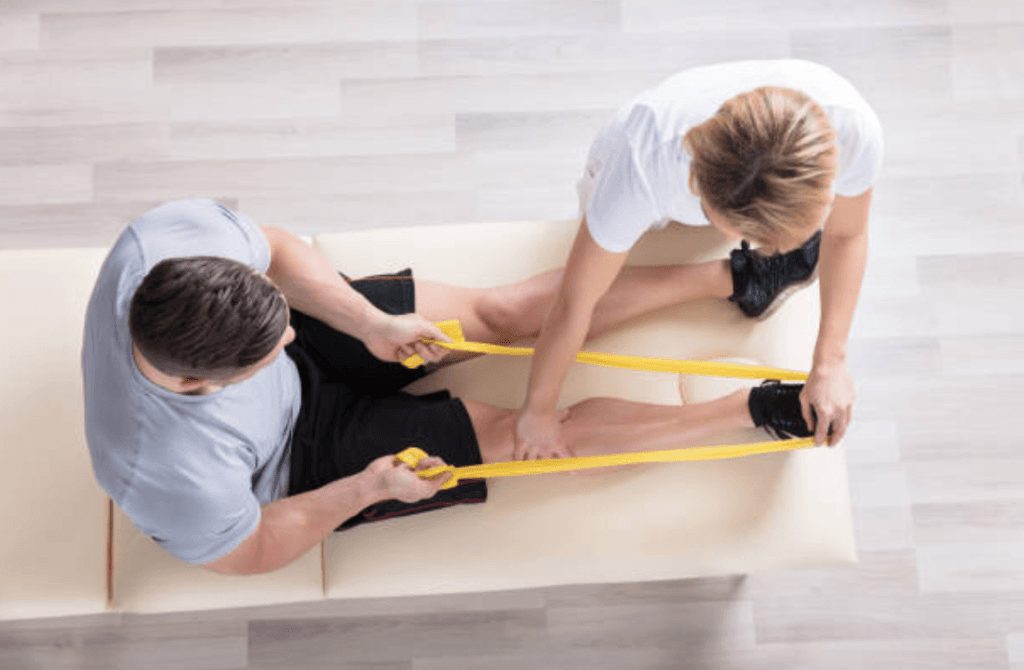
After an injury, your patient may need to work on regaining and maintaining a normal range of motion (ROM) in their joints. Range of motion may also be limited by tight muscles or structures that occur after a period of immobilization following injury or surgery.
Exercises that improve the lower extremity range of motion include:
- Ankle pumps
- Calf stretch with a towel
- Heel slides to improve knee ROM
- Hip rotation stretches
- Hamstring stretches
Lower Extremity Strengthening

Strengthening exercises may be incorporated into your patient’s gait training program. If your patient has weakness in their hips, knees, or ankles, they may prevent them from walking safely. Exercises for their lower extremities include:
- Quad sets and short arc quads
- Ankle strengthening with resistance bands
- Step-ups
- Mini squats
- Straight leg raises
Exercises should be done slowly, and it is recommended to use light resistance and high repetitions for lower extremity gait training exercises. This is because walking is a low-resistance, high-repetition activity. Your patient’s exercises should mimic that type of motion.
Stepping Over Obstacles
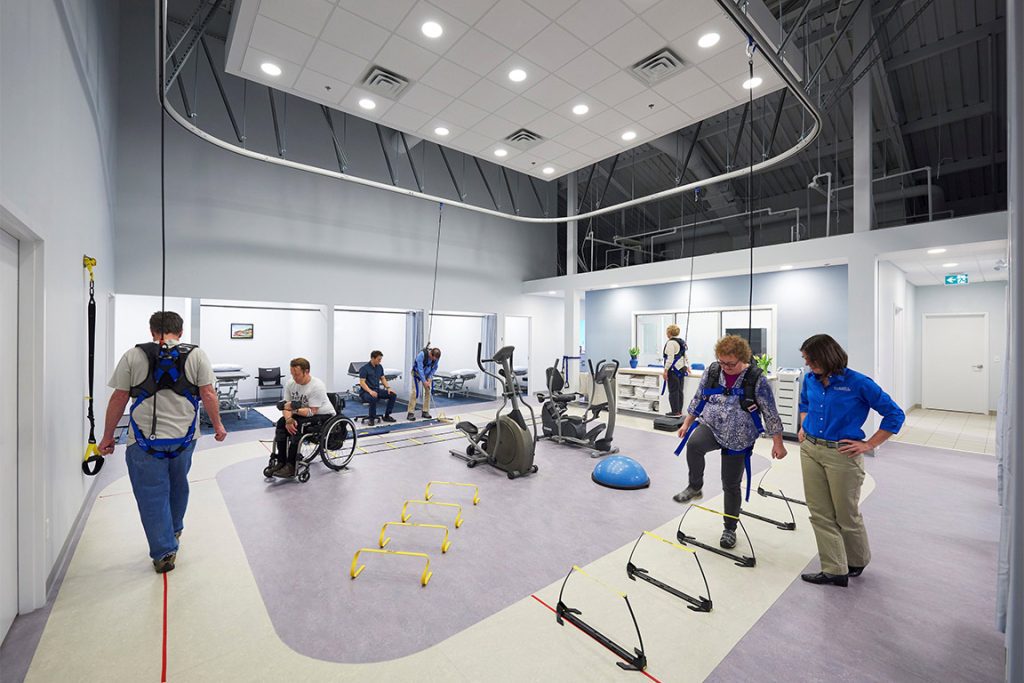
Accentuating the motions that occur in the legs while walking is one of the best ways to improve your patient’s gait. One way to do that is to perform stepping exercises over obstacles or small hurdles. This forces the patient to flex their hips up high and bend their knees up behind them when they walk.
Obstacle Gait Training
How to perform obstacle gait training:
- Set up five or six small obstacles in a row about 15 inches apart. Obstacles can be athletic hurdles, cones, small steps, etc.
- If your patient needs extra assistance or has a fear of falling, the Solo-Step safety overhead system can be used as a safety precaution.
- Have your patient face the obstacles, and have them step over one with one foot. Then, have the patient place their other foot next to their first foot.
- The patient should repeat walking over the obstacles until they reach the end. Have the patient turn around and step over the obstacles leading with their other foot first.
- Once this is easy for the patient, have your patient raise their knees up high and their ankle up towards their buttocks when taking steps.
- The patient may repeat walking over the obstacles for 10 repetitions.
Side Stepping Gait Exercises
Once obstacle stepping has become easy when stepping forward over the hurdles, your patient can try stepping over sideways. This alteration to their normal forward gait can help them move in different directions while walking.
You can perform side-stepping gait exercises by:
- The patient can stand with the obstacles to their side
- The patient can take one step sideways over the first obstacle.
- When your patient is placing their foot down on the other side of the obstacle, be sure they leave enough room for their second foot to land.
- The patient should lift their second foot up, high knee.
- Have the patient place their second foot next to their first foot then repeat over all of the obstacles.
Precautions
Since obstacle stepping requires big steps with high knees, it requires the patient to spend extra time standing on one leg as they step. While this can improve gait, it may also create instability as the patient steps. Ensure your patient is safe while performing these exercises. The Solo-Step safety overhead system can give them extra support during therapy, but the physical therapist should be with the patient to help guide them as they walk.
Target Stepping
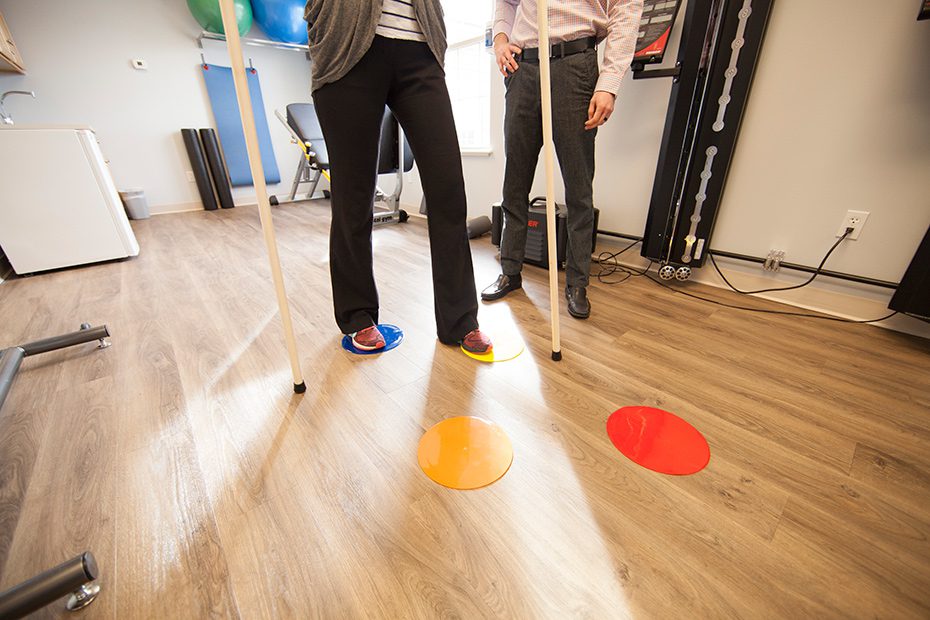
Target stepping can help the patient improve their lower extremity coordination during their gait training exercise routine. To do target stepping:
- Place four or five targets on the ground in a semicircle. The target should be about one foot apart. You can use cones as targets.
- Have the patient stand to one side of the targets on the floor.
- The patient can slowly step with one foot to tap a target.
- Have the patient return that foot to the starting position, the patient can reach out again to another target and tap it with their foot.
- The patient can repeat tapping each target with one foot, and then the other.
This exercise helps improve the patient’s ability to place their foot exactly where they want it while walking and has the added benefit of encouraging single-leg standing.
Retro Walking
Backward walking can help improve your patient’s gait. The benefits of backward waking include:
- Improved hamstring flexibility
- Improved quadriceps activation
- Improved balance
- Improved coordination
- Improved walking speed
- Improved step length and stride length
Backward helping may reset the neuromuscular system, challenging your patient’s lower extremity muscles and joints in specific ways that may improve their gait.
The safest way to implement retro walking into your patient’s gait training exercise program is with an assistive device (like the Solo-Step) and a treadmill:
- To start, ensure your patient is in the Solo-Step harness and is standing on the treadmill facing backward.
- Start the belt moving at the slowest speed possible.
- On the treadmill, the patient should reach one foot backward and place their toe down.
- The patient should roll onto their mid-foot and then their heel.
Retro walking should be done slowly and in control. The therapist should be assisting the patient along with the Solo-Step safety overhead system. Use the safety emergency stop function on the treadmill if necessary.
Balance and Proprioception Exercises
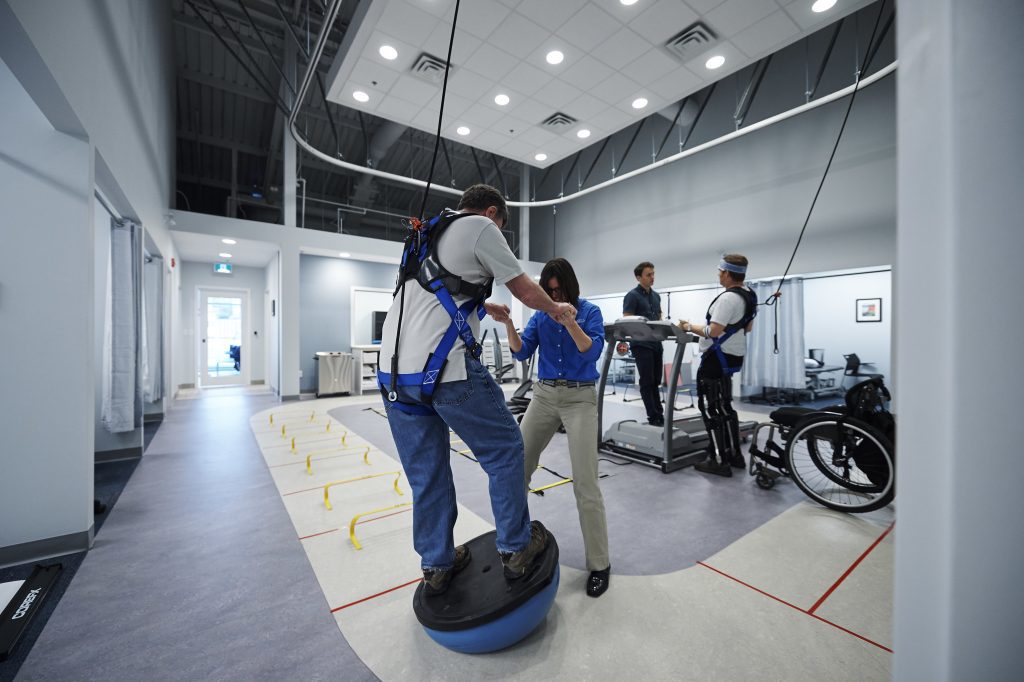
Balance and proprioception training is a necessary component of a gait training exercise program. Walking requires balance on one foot about 40% of the time because one foot is on the ground while the other swings forward through the air. That means that single-leg standing is an important component of safe walking.
Exercises that help improve balance and proprioception include:
- Single-leg stance
- Single-leg stance on an unsteady surface
- Single-leg stance with eyes closed
- Tandem standing and walking
- Single leg stance on a BOSU or BAPS Board
To improve your patient’s balance, it needs to be challenged. This means creating situations where they may be a little unsteady. The patient’s body then has to correct for this unsteadiness.
As your patient practices, their balance should improve along with their gait. But, the patient needs to remain safe while balance training. Be sure the therapist is with the patient and the patient is using an assistive device like the Solo-Step if needed.
Protect Your Patients During Gait and Balance Training
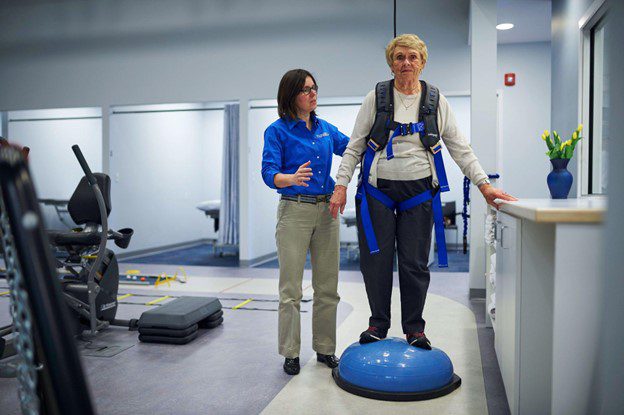
If your patient has a lower extremity injury that causes difficulty with safe and normal walking, they may benefit from gait training in physical therapy. Therapists can help choose the right exercises and activities to improve their patient’s lower extremity motion and strength, improve balance, and help return their patients to normal safe walking. The Solo-Step safety overhead system allows therapists to help treat their patients safely and effectively during gait and balance training. To learn more about the Solo-Step safety overhead system, click the button below!